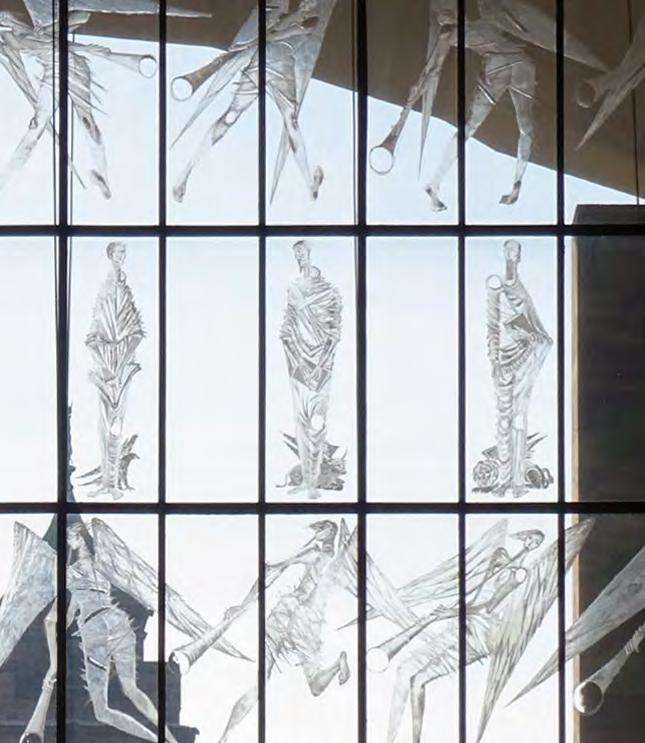CONSERVATION FRAMEWORK
5.3.8 OPERATIONS, MANAGEMENT AND USE See also: 5.3.4
Ruined cathedral
5.3.5
New cathedral
5.3.9
Visitor facilities and access
5.3.10
Interpretation
5.3.11
Environmental Sustainability
5.3.12
Landscape and setting
5.3.13
Research and understanding
HERITAGE CONSIDERATIONS Coventry Cathedral is primarily a place of worship, with reconciliation at the heart of its mission and ministry. This must be considered as the overarching function of the place, and a site-specific value of its significance. However, the practice of welcoming a wide variety of visitors and accommodating secular events should be recognised as one that locates the Cathedral at the heart of the community. Successful and efficient operations, management and use of the Cathedral is vital to the preservation or enhancement of its significance. The governance structure of the Cathedral includes Chapter, the Cathedral Council, the College of Canons and a Senior Leadership Team, all of whom play an important role in overseeing the everyday operations of the Cathedral, as well as supporting its strategic direction. Each group should take some time to become familiar with the CMP and what it says about the management of this special place.
The most immediate impact of limited financial resources is on the built fabric. The Cathedral is effectively supporting not one, but two Grade I listed structures, which places an increased burden on repair and maintenance budgets. Annual maintenance and renewal tasks require a defined budget and major repair works have a substantial impact on resources. Repairs – or even understanding the causes and need for repairs – is not a straightforward process and sources of major external funding will generally be needed. For example, the Chapel of Unity repair project cost £900,000 and took three years to complete. A similar exercise is now required for the Chapel of Industry and Christ the Servant. Funding applications, repair works and business planning all need specialist consultant input which involves up-front costs. There is also a need to become more commercially astute as Coventry becomes City of Culture in 2021, with the potential to draw on bold and entrepreneurial ideas in retail and events to generate income and widen audiences.72 This does not need to be at odds with heritage significance, but can draw upon the Cathedral as a tool to support greater resilience and viability.
VULNERABILITIES AND CONFLICTS The Cathedral has a robust governance and management structure with a will to create greater sustainability into the future. However, resources are now required in order to invest in the future. A lack of resourcing – both human and financial – can stifle or supress ambition and lead to decisions that are often short-term and reactive. From an organisational perspective there are issues around capacity and organisational readiness. There are also the underlying financial challenges and resource constraints of the Cathedral and a key objective of the masterplanning work is to help secure a more sustainable financial future for the long-term.71
71
A Different View, August 2019
In terms of governance and succession planning, there is a need to fully catalogue and digitise the archives, the inventory requires updating and converting into a useable document, and a disposals/ retentions plan could be created to deal with, for example, unused modern office furniture, which is spread out across the undercroft. Back-of-house spaces are complex and not efficiently used and the lack of defined storage restricts the ability to delineate spaces for specific categories of objects. From a management perspective, this issue highlights the impact of small but cumulative actions or inactions that can inflict harm on the Cathedral as a whole.
72
127
Ibid














